Car dealership marketing connects local shoppers with the vehicles and services they need. Done well, it brings steady foot traffic, qualified leads, and repeat customers.
In today’s market, competition isn’t just across town: it’s every dealership within a 50-mile radius and every online retailer running ads in your area.
Buyers expect seamless experiences, transparent pricing, and fast responses. That means your marketing plan must blend traditional sales know-how with digital precision.
This guide outlines 10 actionable car dealership marketing strategies to help you attract more local buyers, build trust, and convert interest into sales.
1. Build a Fast, User-Friendly Website
Your website is the foundation of your dealership’s online presence. It’s where most buyers form their first impression of your business and decide whether to visit your lot or move on to another dealer.
A fast, well-organized website makes browsing effortless, builds confidence in your inventory, and captures leads that might otherwise disappear.
In this section, you’ll learn how to improve speed, structure, visuals, and usability so your site feels as trustworthy and easy to navigate as walking into your showroom.
Improve Page Speed First
Page speed is the biggest lever for reducing bounce rate and keeping shoppers on your site. Compress images, defer non-essential scripts, and remove heavy widgets that slow mobile pages.
Use Google’s PageSpeed Insights tool to pinpoint what’s blocking fast loads and follow its prioritized recommendations. Aim for under three seconds on mobile so visitors can reach vehicle pages without friction.
Simplify Navigation
Navigation should get buyers to vehicles, financing, and service in as few clicks as possible. Use clear top-level labels like New, Used, Certified, Financing, and Service, and keep mega menus short and predictable.
Limit on-page choices to reduce decision fatigue and guide visitors toward model, trim, and price filters. Add a persistent search bar so shoppers can jump straight to the vehicle they have in mind.
Highlight Key Actions
Calls to action should be obvious on every page, not buried below the fold. Place “Schedule a Test Drive,” “Get Pre-Approved,” and “Value My Trade” in consistent positions site-wide, including vehicle detail pages and blog posts.
Use short, plain labels and confirm the next step with microcopy so people know what happens after they click. Track clicks and completions to spot friction and improve conversion paths over time.
Use Quality Visuals
High-resolution photos and 360° views help buyers evaluate condition and features without visiting the lot. Show exterior, interior, instrument cluster, tires, and any notable wear so expectations match reality.
Keep backgrounds clean, lighting consistent, and image file sizes optimized to protect page speed. Add short captions that call out highlights like packages, mileage, and recent reconditioning.
Be Transparent About Pricing And Availability
Transparent pricing builds trust and reduces back-and-forth with your sales team. Display real prices, fees that legally must be shown, and clearly mark vehicles that are pending or sold. Sync inventory status frequently so ads, search listings, and vehicle detail pages match.
Include simple contact options for price questions and trade appraisals to keep shoppers moving.
Keep The Site Fresh
Websites that are updated frequently signal an active dealership and improve visitor trust. According to the State of Small Business Marketing report, 35% of businesses update their websites monthly and 31% update weekly.
Treat your site like your lot by refreshing hero banners, rotating featured inventory, and archiving sold vehicles quickly. Review analytics monthly to retire low-performing pages and double down on layouts and content that convert.
2. Optimize Your Google Business Profile
Your Google Business Profile (formerly Google My Business) determines how your dealership appears in local search results and Google Maps. An optimized profile can help you appear when nearby buyers search “car dealership near me” or “used trucks in [city].”
Update every field, including business name, address, phone number, hours, and website link, and make sure it matches what’s on your site. Add your inventory categories, services, and financing options under “Products” or “Services.”
Use your profile to show buyers what makes your dealership stand out and why they should visit:
- Show your lot and showroom: Post clear, well-lit photos that convey professionalism and activity. Update them regularly so buyers see an accurate, inviting view of your dealership.
- Highlight your team: Add friendly team photos to humanize your dealership and build trust. Use natural poses and genuine expressions to make your staff approachable.
- Promote new arrivals and events: Share posts about incoming models, seasonal offers, and community happenings. Frequent updates keep your profile active and attract both new and returning visitors.
Include questions and answers for common inquiries like “Do you take trade-ins?” or “What financing options are available?” Consistency and accuracy improve both rankings and trust.
3. Collect and Showcase Customer Reviews
Reviews are your digital word-of-mouth. According to the State of Online Reviews report, 92.5% of buyers have read an online review in the past year, and more than 78% won’t consider a business with less than a four-star rating.
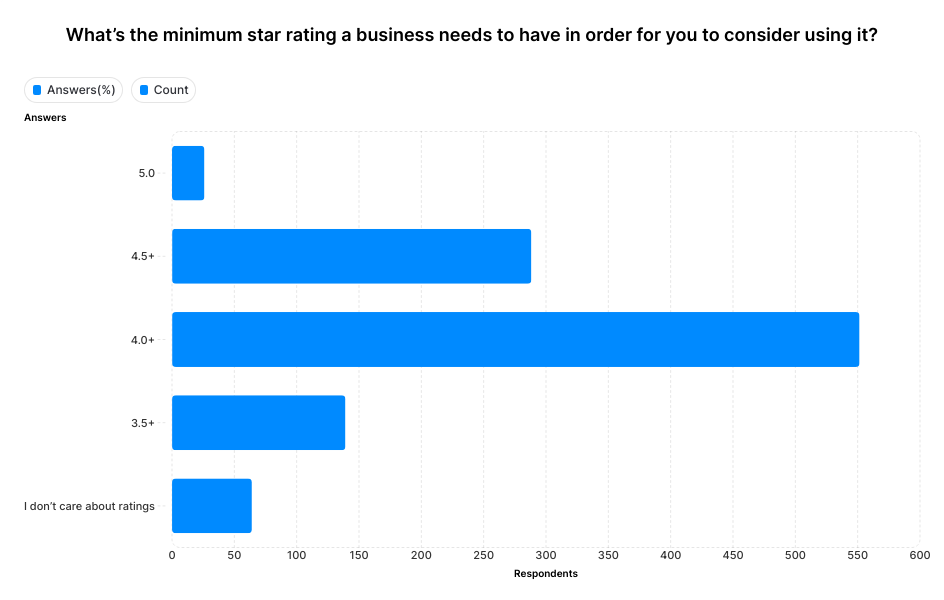
Encourage happy customers to share their experience. The best time to ask is within 24–48 hours of purchase or service.
Here’s how to make it a habit:
Automate Review Requests
The easiest way to grow your reviews is to make asking automatic. Set up short email or text reminders that go out within 24–48 hours after purchase or service.
ReviewsOnMyWebsite makes this easy to do, thanks to its automated email and SMS review requests feature.
Keep messages simple and personal: thank the customer, include a direct review link, and avoid long surveys. Automating the process ensures every happy buyer gets a chance to share feedback without your team needing to remember each follow-up.
Train Your Team To Ask In Person
Sales and service advisors play a big role in review growth. When a customer leaves smiling, have your staff invite them to leave a quick review on Google or Facebook before they drive off the lot.
A direct, friendly ask feels natural and reinforces trust. Create short talking points or scripts so everyone on your team feels comfortable making the request consistently.
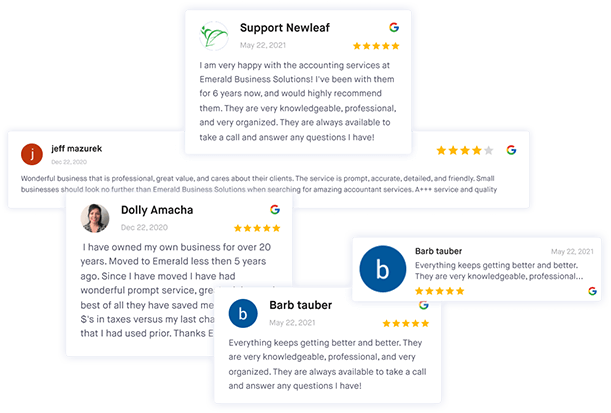
Manage online reviews with ease
Monitor, manage, and get more online reviews for your car dealership with ReviewsOnMyWebsite.
Monitor Reviews Across Multiple Platforms
Your reputation lives in more than one place. The State of Online Reputation Management report found that 55% of businesses monitor reviews on two to three platforms, while 22% track four to five.
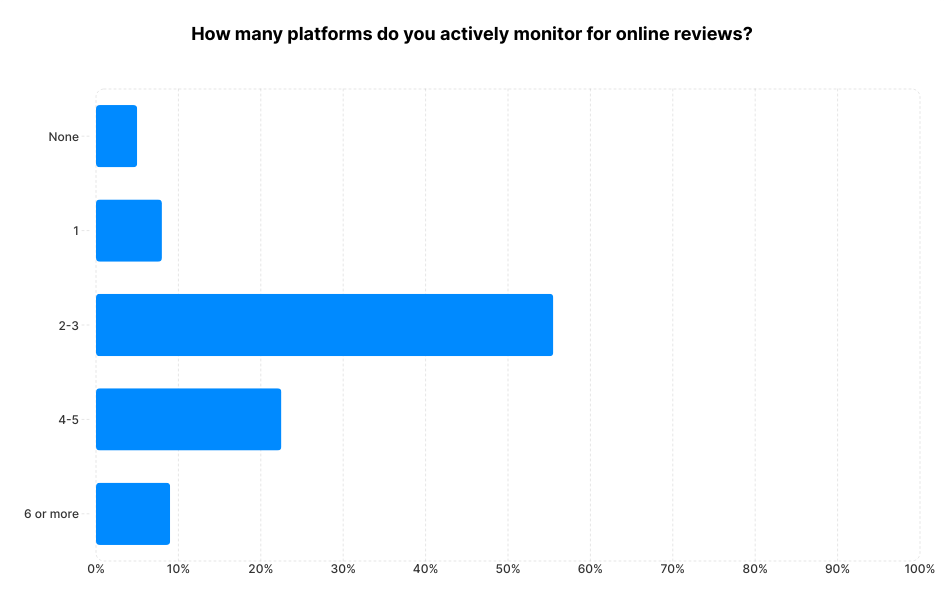
Set up alerts on Google, Facebook, Yelp, and industry-specific sites so nothing slips through the cracks. Centralize those reviews in a shared dashboard or spreadsheet to spot patterns and identify recurring issues faster.
Pro tip: You can use ReviewsOnMyWebsite to track, read, and reply to all the reviews you get across different platforms.
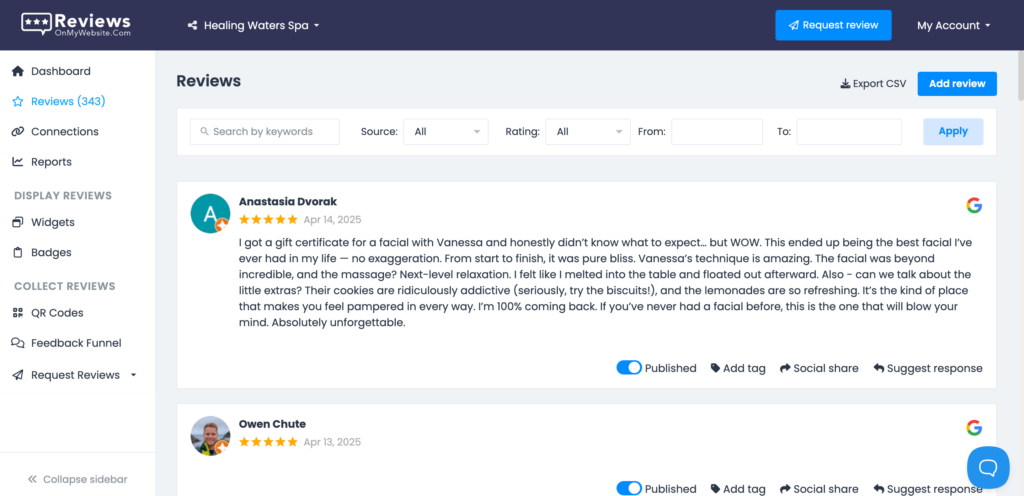
Respond Quickly And Professionally
Replying shows buyers that feedback matters to you. Thank people who leave positive reviews, and for negative ones, acknowledge the issue and explain how you’ll make it right.
Keep your tone professional and never defensive. Respond within one to three days, which aligns with what 70% of consumers now expect.
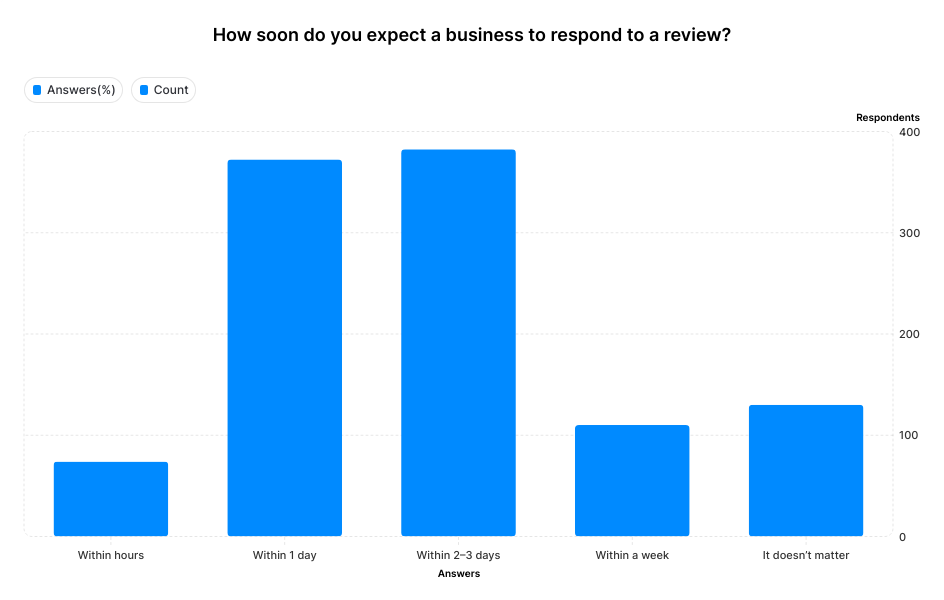
Fast, thoughtful responses turn critics into loyal customers and demonstrate accountability to future shoppers reading your page.
Display Reviews Where Buyers See Them
Once you’ve built a strong base of feedback, make it visible. Feature your latest reviews on your homepage, vehicle detail pages, and service pages to build instant credibility. Add a dedicated “Customer Stories” section or integrate snippets into ads and social posts.
When prospects see consistent, genuine feedback, it validates their decision to contact your dealership and makes your marketing far more persuasive than any slogan could.
Pro tip: ReviewsOnMyWebsite’s review widget allows you to add your top reviews to your site in seconds.
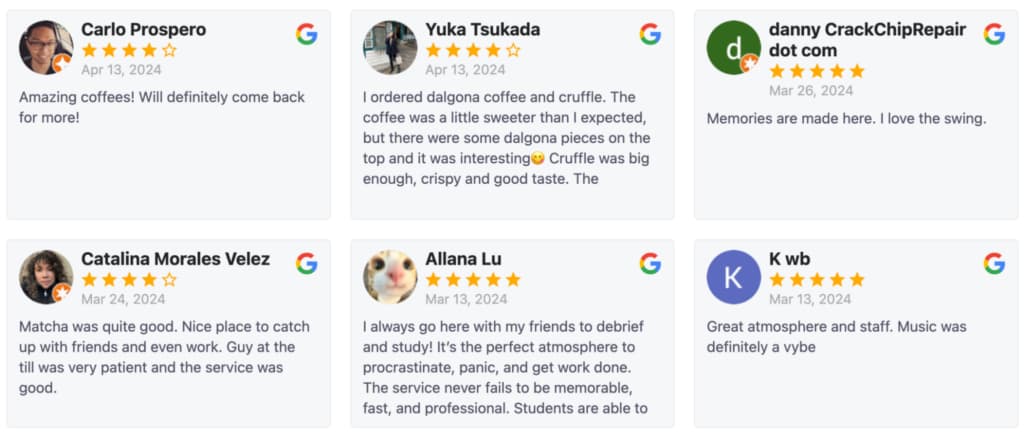
4. Run Inventory-Based Advertising Campaigns
Your inventory changes constantly, so your ads should too. Inventory-based advertising means promoting real vehicles currently in stock, not generic offers.
Use Google Vehicle Ads and dynamic Facebook or Instagram campaigns that pull directly from your feed. These ads automatically update when a vehicle sells or pricing changes, saving time and preventing wasted spend.
Here’s what to prioritize:
- Clean data feeds: Make sure every listing includes accurate titles with the year, make, model, and trim, along with up-to-date pricing and availability. Reliable data keeps ads aligned with your actual inventory and prevents wasted clicks.
- Consistent pricing: Match every ad’s price with what appears on your website and third-party listings. Inconsistencies create confusion and can erode buyer trust before they even contact you.
- Location targeting: Focus your ads on nearby ZIP codes or cities within your normal delivery radius. Local targeting improves ad relevance and reduces spend on clicks from shoppers who are too far away to buy.
- Custom audiences: Retarget shoppers who viewed a vehicle detail page but didn’t take action. Showing them updated pricing, financing options, or similar models can bring them back to complete the purchase.
This approach connects shoppers with vehicles they can actually buy, improving both lead quality and conversion rates.
5. Maintain Accurate and Organized Customer Data
A dealership’s database is one of its most valuable assets. Clean, compliant data powers personalized communication and efficient follow-up.
Audit your CRM (Customer Relationship Management) system monthly to remove duplicates and outdated contacts. Make sure each record includes full name, email, phone number, purchase or service history, and communication preferences.
Follow these best practices:
- Capture consent: Always request permission before sending marketing messages by text or email to stay compliant with privacy regulations. Clear opt-in language builds trust and keeps your dealership’s communications transparent.
- Segment customers: Organize your database by customer type, such as SUV buyers, service visitors, or lease renewals. Segmentation allows you to send targeted messages that match each group’s specific needs and timing.
- Track source attribution: Record where each lead originates, whether from search, social media, paid ads, or referrals. Knowing which channels drive the most qualified leads helps you focus marketing efforts where they matter most.
- Back up regularly: Save encrypted copies of your CRM and contact records to prevent permanent data loss. Schedule automatic backups so your customer information stays safe and recoverable at all times.
Accurate data enables smarter marketing decisions and ensures compliance with privacy regulations.
6. Use Email and SMS Campaigns to Nurture Leads
Not every buyer converts right away. Email and SMS campaigns help you stay top of mind until they’re ready.
Start by mapping your customer journey. Identify key moments like new leads, missed test drives, financing applications, or post-service follow-ups.
Build campaigns around them:
- Welcome sequence: Introduce your dealership with a short message that sets expectations and highlights your top inventory categories. Include clear next steps like browsing vehicles, booking a test drive, or getting pre-approved.
- Test-drive reminders: Send a confirmation 24 hours before the appointment with time, location, and what to bring. Follow up afterward to gather feedback and offer an easy link to reschedule or complete financing.
- Financing updates: Notify customers when they are approved and outline the next steps to finalize paperwork. Share rate changes or limited-time offers that could improve their payment options.
- Service reminders: Alert customers when maintenance is due, such as oil changes, tire rotations, or warranty checks. Include a direct link to schedule service online and a phone number for quick questions.
Personalize every message. Use first names, reference vehicle models, and include direct links to next steps.
7. Create Engaging Video Content
Video is one of the most effective ways to showcase vehicles and humanize your brand. Buyers can see details, hear the engine, and get a feel for the car without visiting your lot.
Start small with short, authentic clips:
- Walk-arounds: Record short videos highlighting key features, condition, and unique details of each vehicle. Keep clips under a minute and focus on what customers care about most, like mileage, trim, and upgrades.
- Feature explainers: Create simple demos that show how new technology works, such as driver assists, infotainment, or parking sensors. Buyers often hesitate over features they don’t understand, so these clips help remove friction.
- Customer stories: Capture quick testimonials right after delivery when excitement is highest. Authentic feedback builds credibility and gives potential buyers confidence in your dealership.
- Behind the scenes: Share moments of your team preparing vehicles, cleaning the lot, or helping customers. These candid posts humanize your dealership and show the pride your staff takes in their work.
Host videos on YouTube and embed them on vehicle detail pages and social media. Keep them under two minutes and end each one with a clear next step (e.g., scheduling a test drive).
Incorporating short-form video into your social strategy builds familiarity and trust faster than static images alone.
8. Build a Strong Presence on Social Media
Social media keeps your dealership visible between major purchases. It’s where buyers browse, research, and interact before ever stepping onto your lot.
Focus on one or two platforms where your audience is most active: usually Facebook and Instagram. Post consistently and mix your content types:
- Share local stories: Post about customer deliveries, charity events, or community partnerships to show your dealership’s local involvement. These stories make your business feel approachable and rooted in the community.
- Feature inventory highlights: Showcase select models, limited-time promotions, or seasonal vehicle types. Consistent highlights keep your audience aware of what’s new and can drive immediate interest.
- Publish educational content: Teach customers how financing works, when to schedule maintenance, or how trade-ins are valued. Educational posts position your dealership as a trusted resource, not just a seller.
- Encourage engagement: Ask followers about their favorite models, dream road trips, or vehicle features they value most. Interactive posts boost reach and keep your social pages lively and conversational.

Manage online reviews with ease
Monitor, manage, and get more online reviews for your car dealership with ReviewsOnMyWebsite.
9. Turn Service Customers Into Repeat Buyers
Your service department isn’t just for maintenance. It’s also a powerful sales channel. Every repair order represents a customer who already trusts your brand.
Build a program that keeps these customers in your ecosystem:
Promote Loyalty Offers
Loyalty programs encourage service customers to keep coming back instead of switching to independent garages. Offer small but meaningful rewards such as discounts on oil changes, free inspections, or points toward future repairs.
Promote these benefits through email, text, and in-store signage so every customer knows what’s available. Consistent, visible rewards turn routine maintenance into long-term retention.
Identify Upgrade Opportunities
Your service data can reveal when customers are nearing the ideal time to upgrade. Flag vehicles with expiring warranties, high mileage, or costly repairs in your CRM, and alert the sales team when those milestones hit.
A well-timed call about trade-in options or newer models feels helpful, not pushy. This simple process connects real customer needs with your current inventory.
Follow Up Personally
Personal communication after a service visit shows customers you value their business beyond the transaction. Send short, friendly follow-ups thanking them for visiting and mentioning any special offers on similar models or trade-ins.
Keep the tone conversational and focus on helping them make informed choices. A few personalized touches can turn a satisfied service customer into a loyal buyer.
Send Service Summaries With Recommendations
Service summaries are another opportunity to spark future sales. Include clear details about what was done, what’s next, and a gentle note such as “Your next vehicle might be…” with links to similar models.
Customers appreciate transparency, and this format feels more like advice than promotion. Over time, these small nudges remind them that upgrading through your dealership is convenient and trustworthy.
10. Track Key Metrics and Analyze Performance
You can’t improve what you don’t measure. Tracking key metrics shows where your marketing dollars work best.
Focus on metrics that reflect sales impact:
- Leads by source: Identify which channels (search, social, referrals) generate the most qualified prospects.
- Conversion rate: Track how many inquiries turn into test drives and purchases.
- Cost per lead and cost per sale: Calculate the true efficiency of each campaign.
- Review volume and rating: These signal overall customer satisfaction and influence search visibility.
- Website performance: Monitor traffic, bounce rate, and time on page using Google Analytics.
Frequently Asked Questions About Car Dealership Marketing
How Do I Market My Dealership?
Focus on the fundamentals you control: a well-optimized website, accurate Google Business Profile, and consistent reviews. Layer on social media visibility, local ads, and email follow-ups. Set clear goals, track performance, and adjust each quarter to improve results.
How Can I Get More Customers to Visit My Dealership?
Promote specific reasons to visit, such as limited-time offers, service specials, or community events. Run local ads targeting nearby neighborhoods and make online scheduling effortless. Once they arrive, ensure every visitor is greeted quickly and professionally to turn walk-ins into buyers.
What Type of Advertising Works Best for Car Dealerships?
Advertising tied directly to live inventory performs best. Use Google Vehicle Ads and dynamic social campaigns that feature actual vehicles in stock. Retarget previous website visitors with updated offers and focus budget on high-intent keywords and nearby locations.
How Much Should I Budget for Dealership Marketing?
According to the State of Small Business Marketing report, about four in ten businesses spend 6–10% of their revenue on marketing. Start within that range and adjust based on results. Prioritize essentials like your website, local SEO, and lead response tools before scaling paid ads.
How Should Used Car Dealerships Market Themselves?
Used-only dealerships should focus heavily on trust and transparency. Provide detailed condition reports, clear warranty information, and customer testimonials. Highlight reconditioning and service history on every listing to reduce buyer hesitation and increase inquiries.
Build a Dealership Marketing System That Lasts
The best marketing strategy is one you can sustain. Focus on doing the basics consistently: maintaining your website, collecting reviews, updating ads, and responding quickly to leads.
Car dealership marketing ideas that work long term are those rooted in real customer experience: clear information, fast service, and genuine follow-up. Over time, that reliability becomes your most powerful competitive advantage.
Keep Your Marketing Strategy Up to Date
Marketing a car dealership is a continuous effort that evolves with the market. Buyer preferences, inventory trends, and ad platforms can shift fast, so your strategy needs to keep pace.
Review your marketing plan every quarter to assess what’s working, document key takeaways, and set new goals for the next period. Keep learning from automotive marketing blogs, manufacturer updates, and platform changes to refine your approach.
A flexible, data-driven strategy helps your dealership stay competitive and improve with every cycle.




